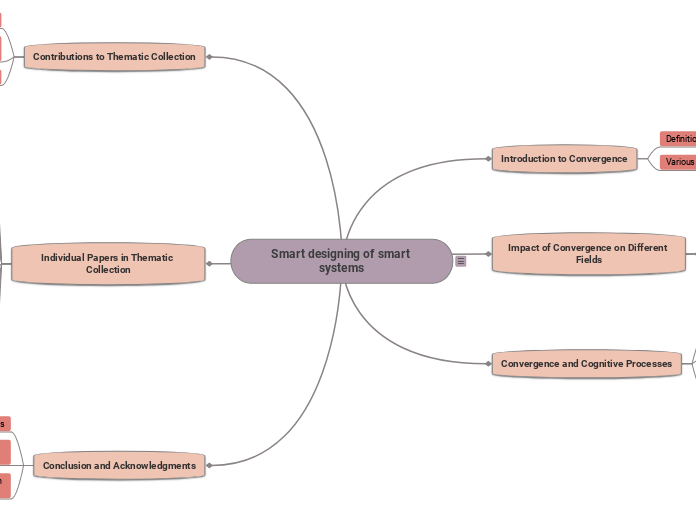Smart designing of smart systems
Introduction to Convergence
Definition and Explanation of Convergence
Various Forms and Domains of Convergence
Impact of Convergence on Different Fields
Influence on Scientific Disciplines
Integration of Hardware, Software, and Cyberware in Complex Systems
Interaction between Social Demands and Technological Affordances
Merge of Massive Data, Information, and Knowledge
Convergence and Cognitive Processes
Influence on Physical Processes
Influence on Perceptive Processes
Influence on Cognitive Capabilities of Humans and Engineering Systems
Contributions to Thematic Collection
Explanation of Thematic Collection
Sources of Papers: TMCE 2020 and Call for Papers
Overview of Papers Included
Individual Papers in Thematic Collection
Paper 1: Connectors of Smart Design and Smart Systems
Paper 2: Smart Design of Intelligent Companion Toys for Preschool Children
Paper 3: A Scenario-Integrated Approach for Functional Design of Smart Systems
Paper 4: A Self-Learning Element Extraction System by Reinforcement Learning
Paper 5: Smart Platform Experiment Cycle – A Process to Design, Analyze, and Validate Digital Platforms
Paper 6: Autonomous Resource Allocation of Smart Workshops for Cloud Machining Orders
Paper 7: Association Rules Mining between Service Demands and Remanufacturing Services
Paper 8: Assurance Monitoring of Learning Enabled Cyberphysical Systems Using Inductive Conformal Prediction Based on Distance Learning
Conclusion and Acknowledgments
Summary of Key Points
Acknowledgment of Authors, Reviewers, and Editors
Hopeful Impact of the Thematic Collection on Research and Industry
